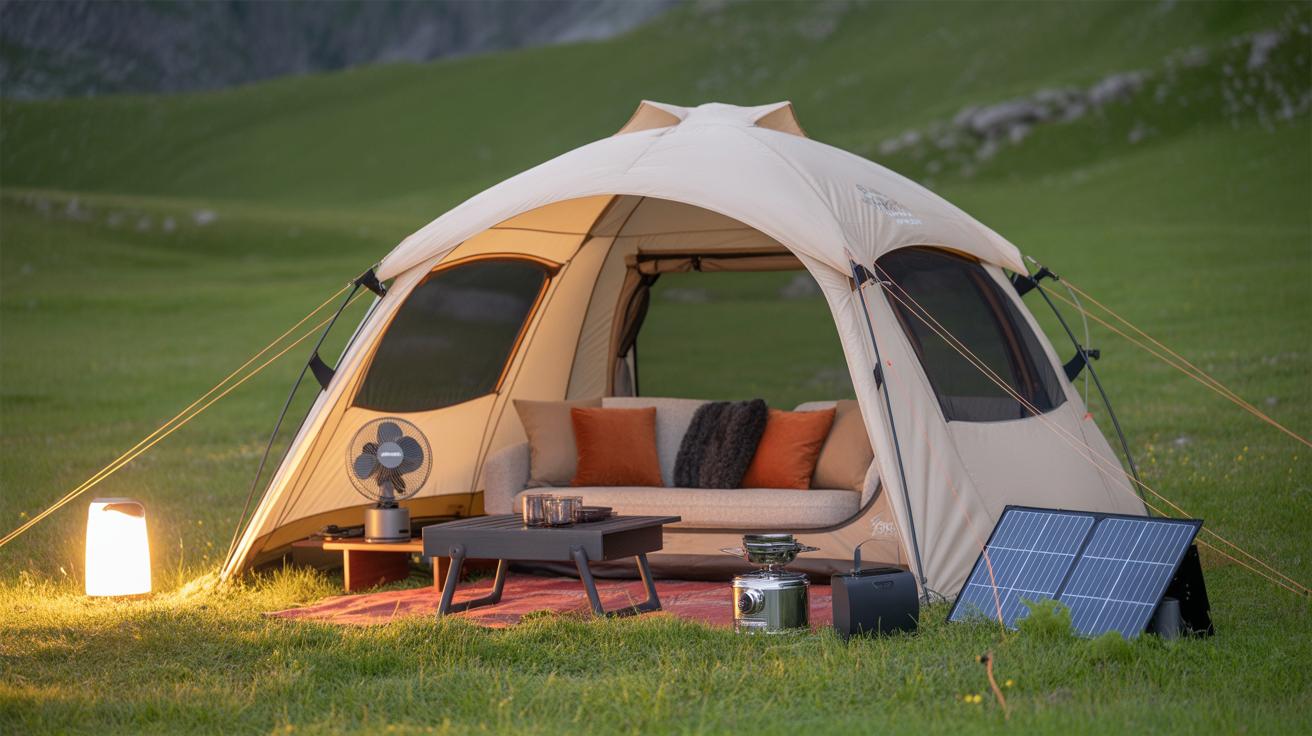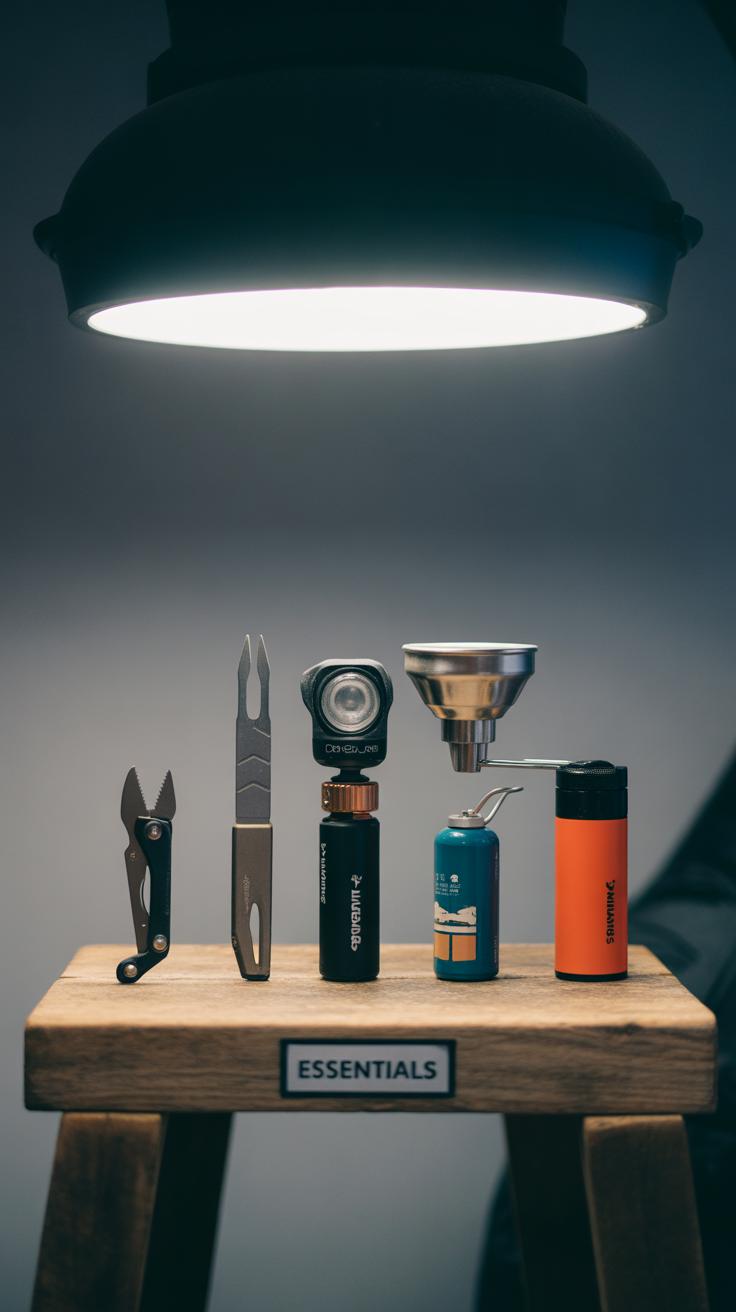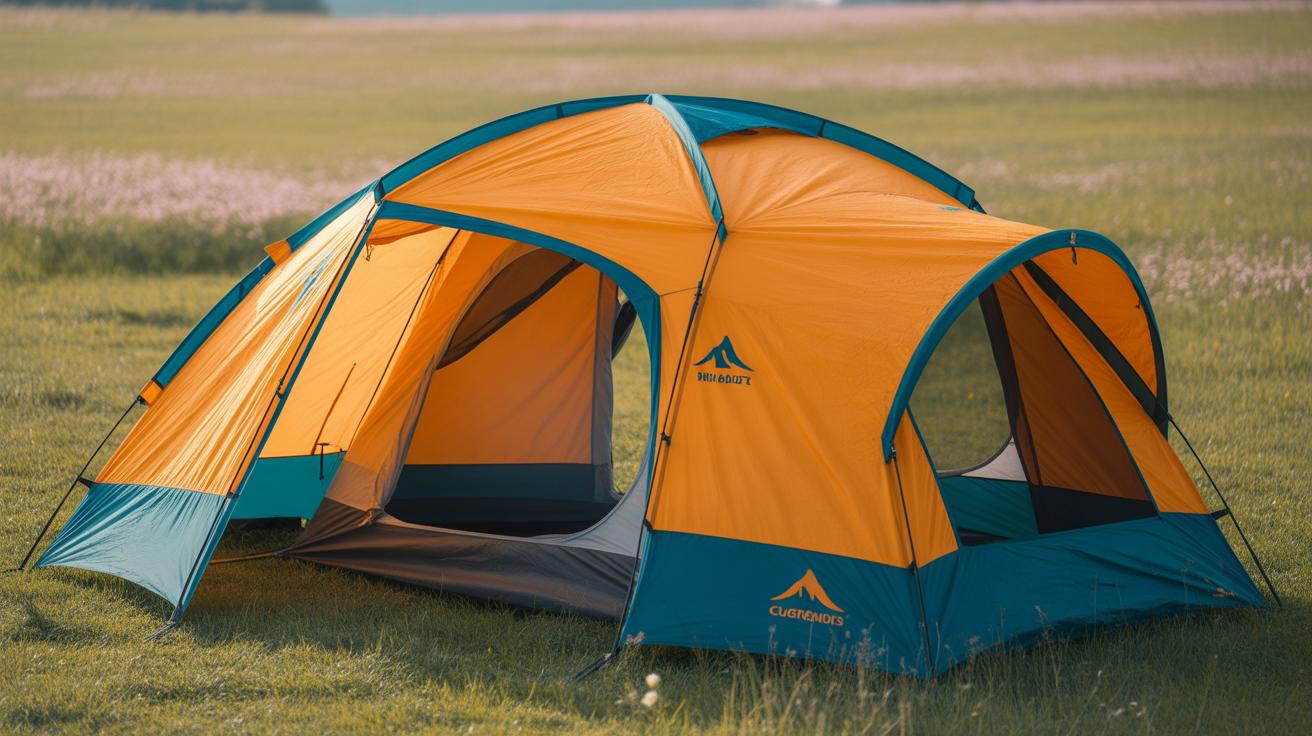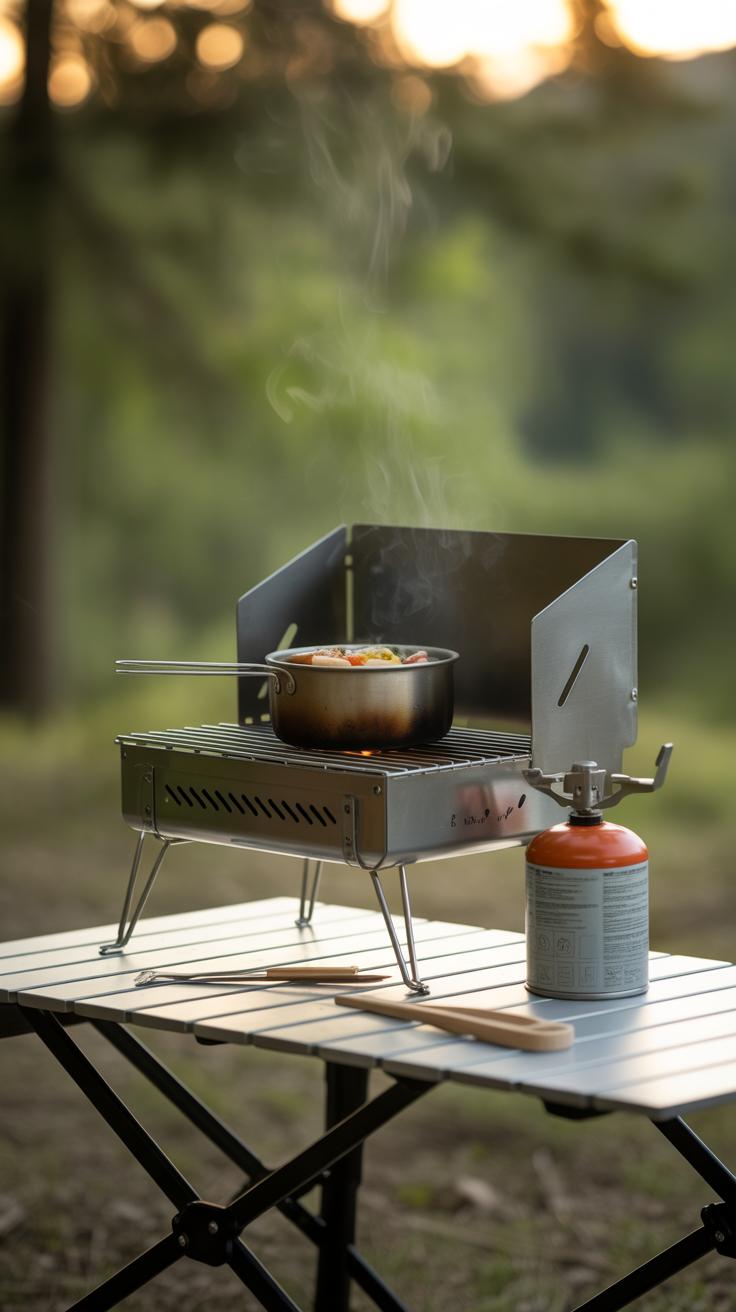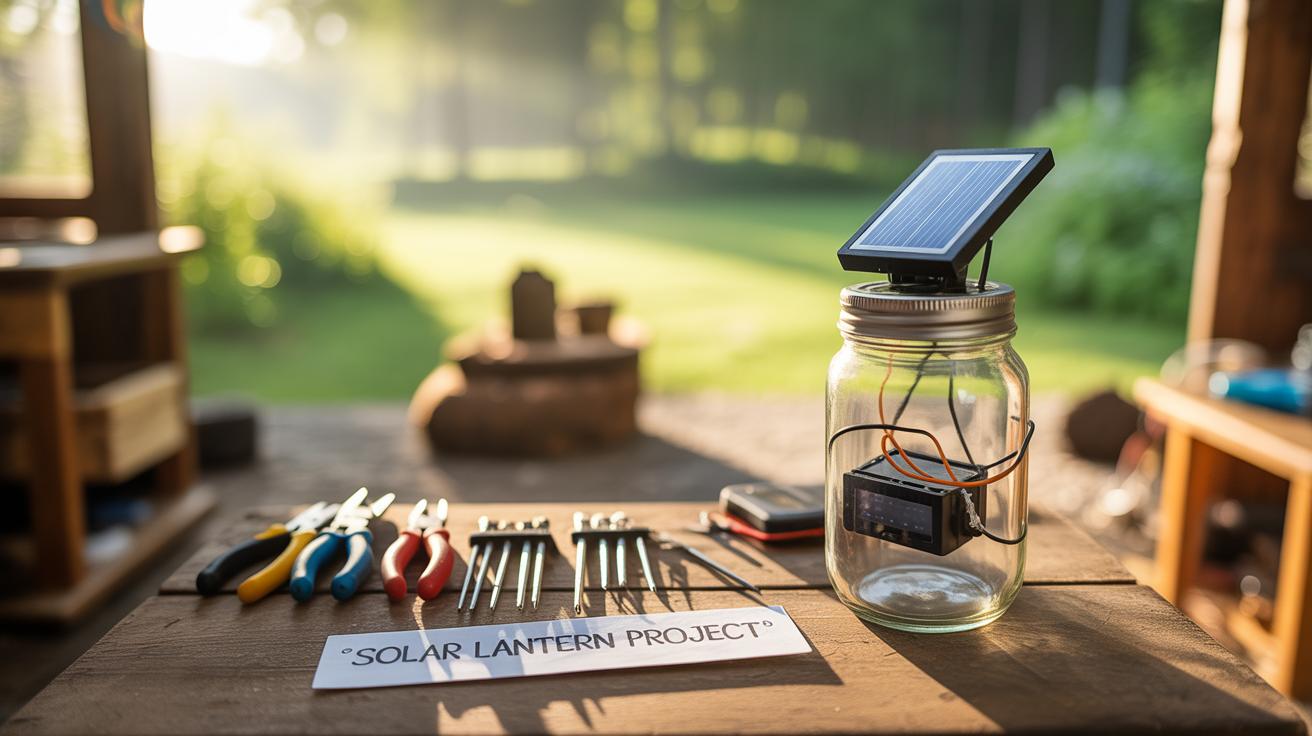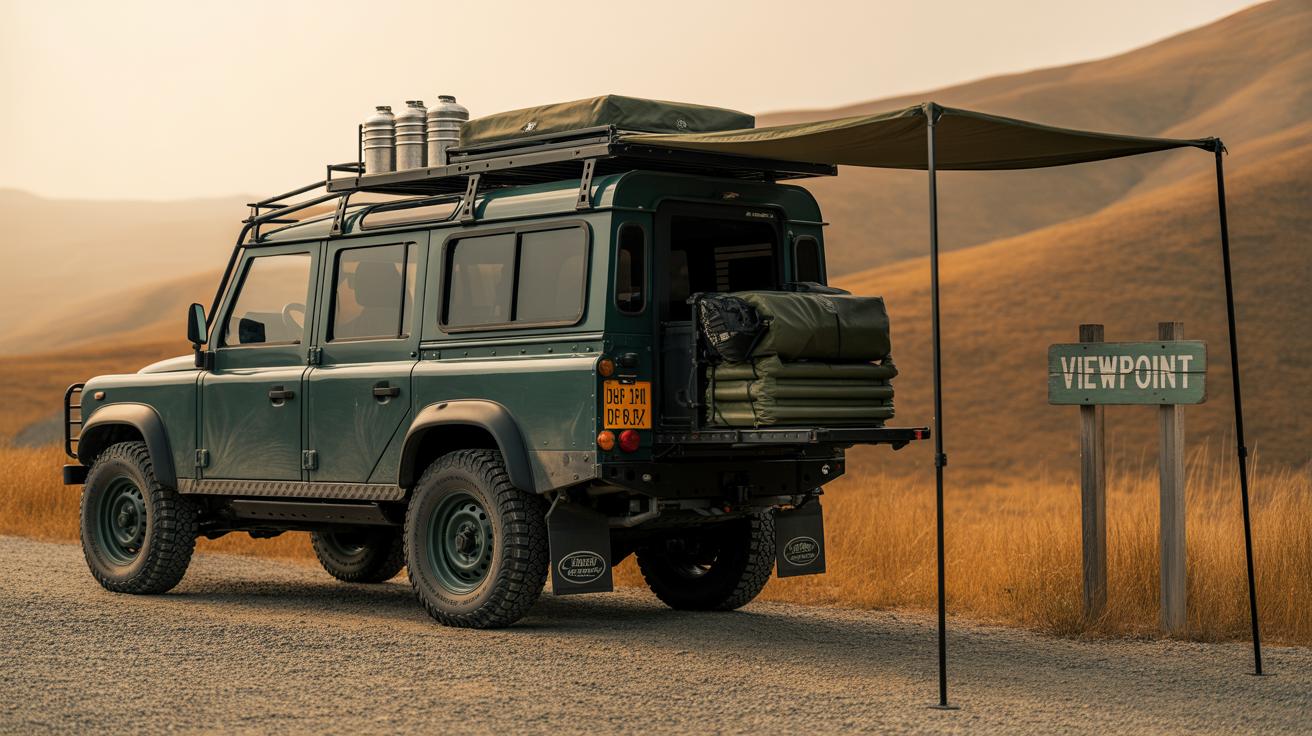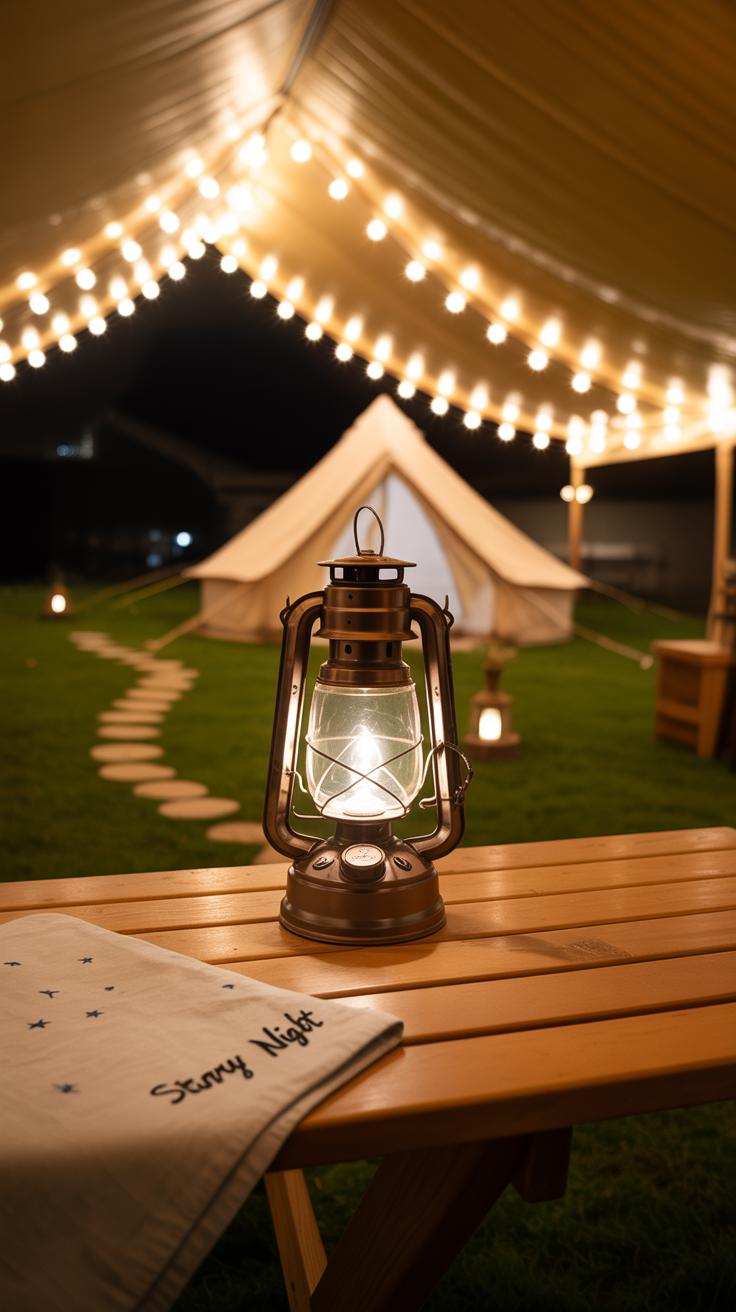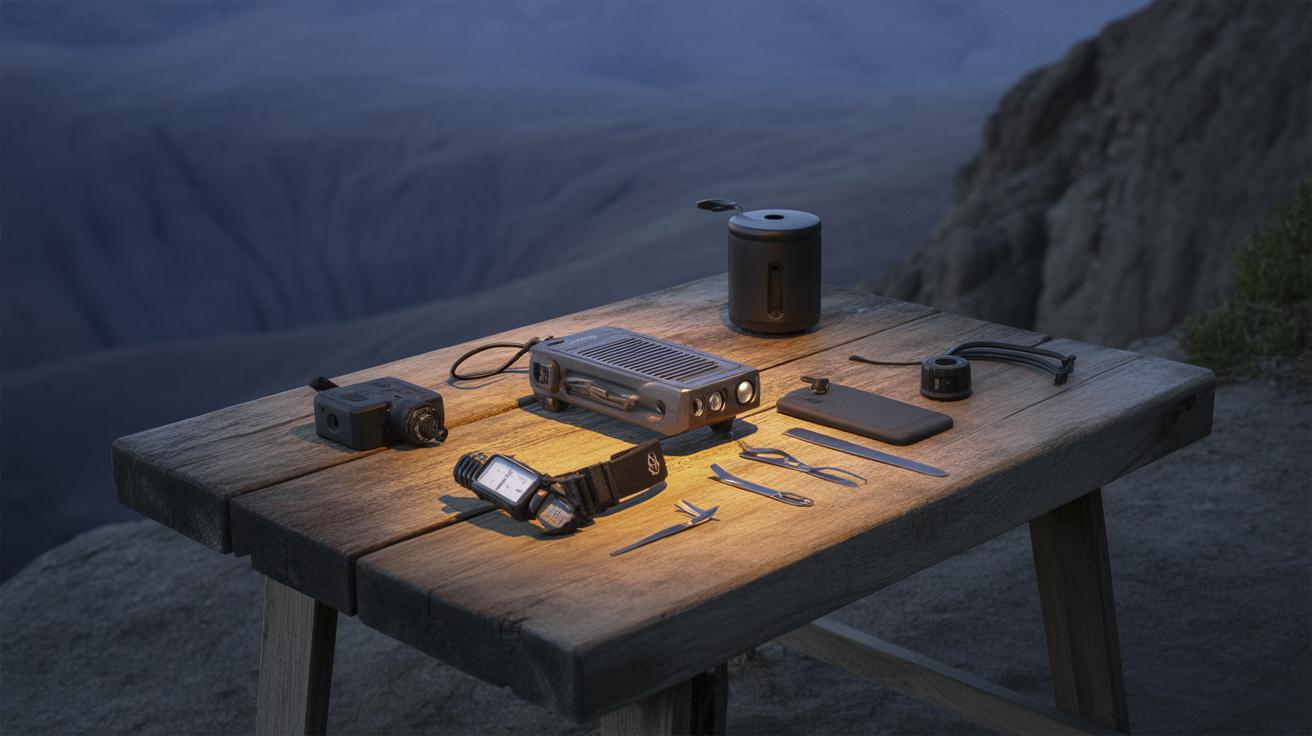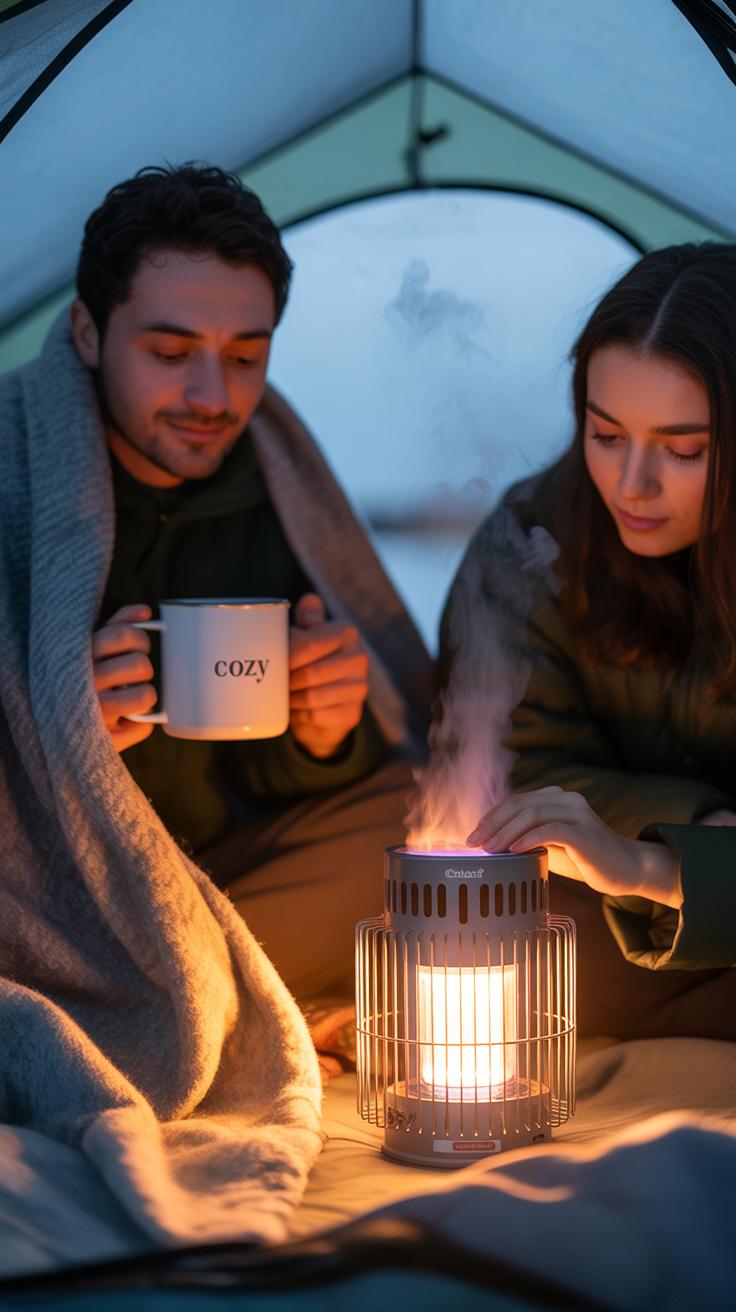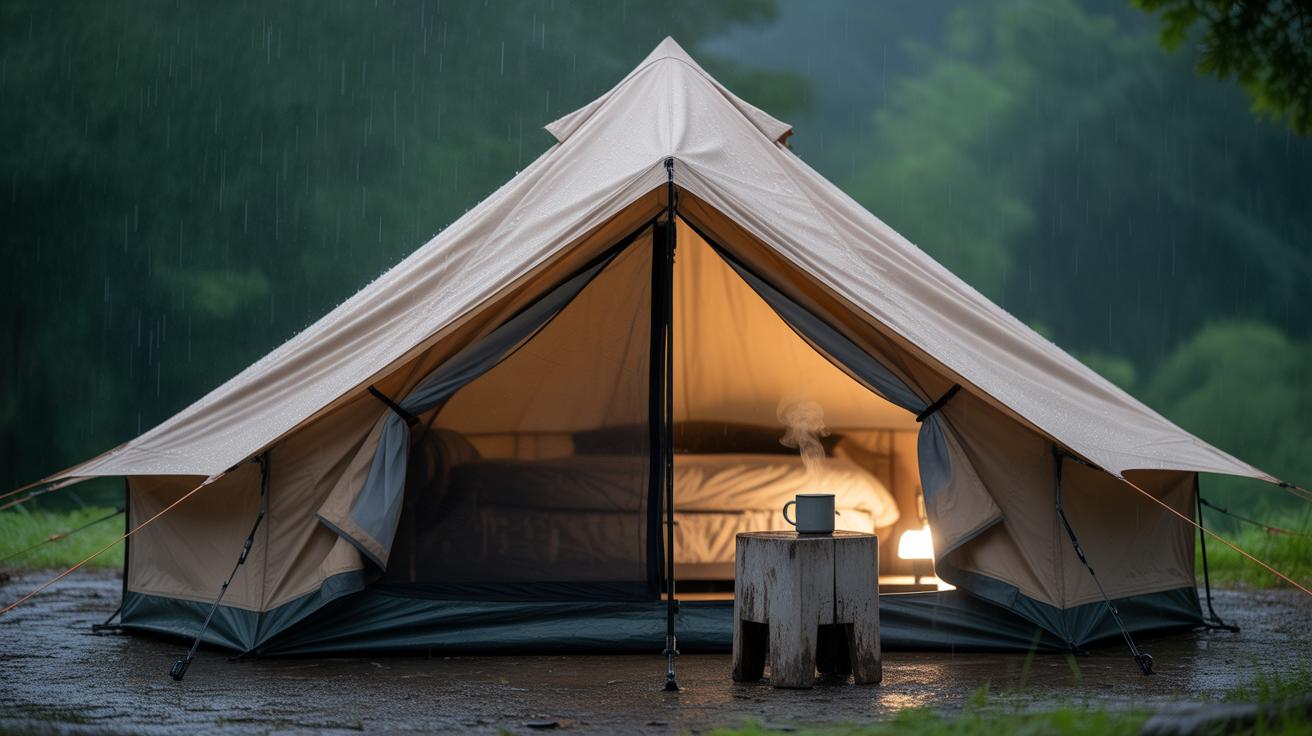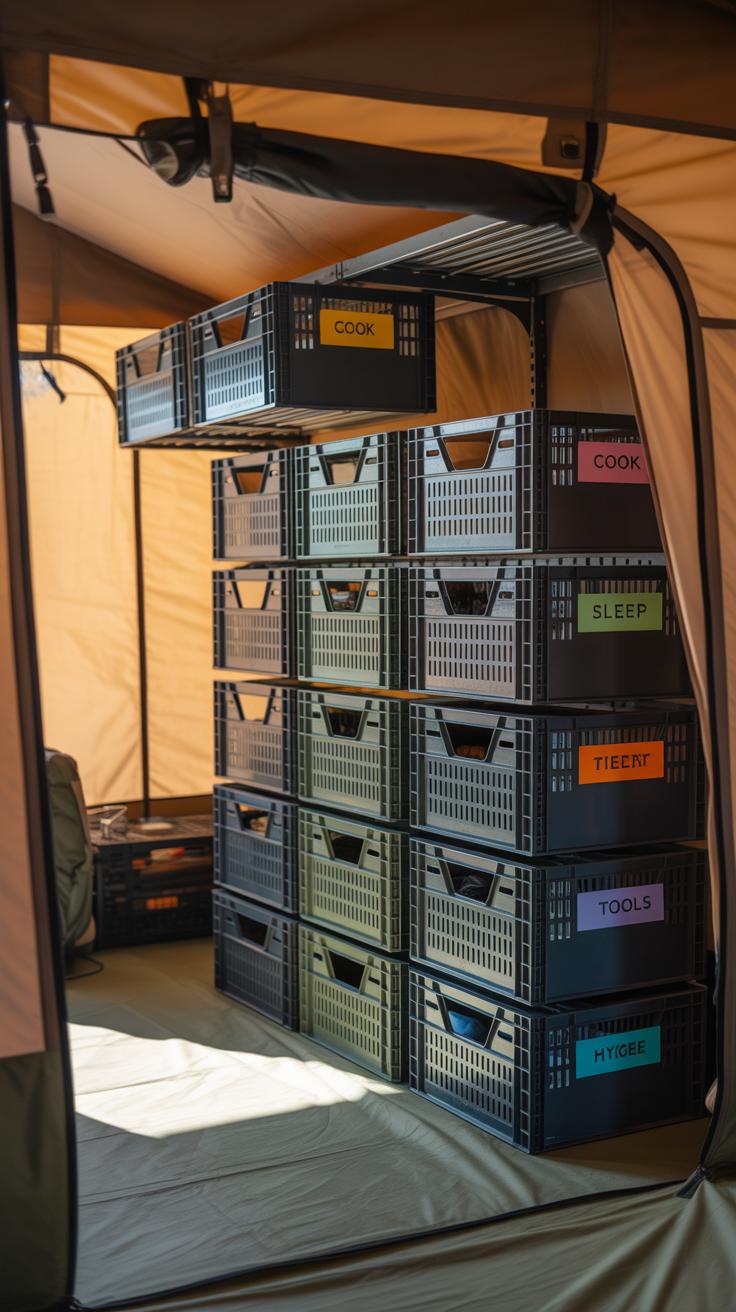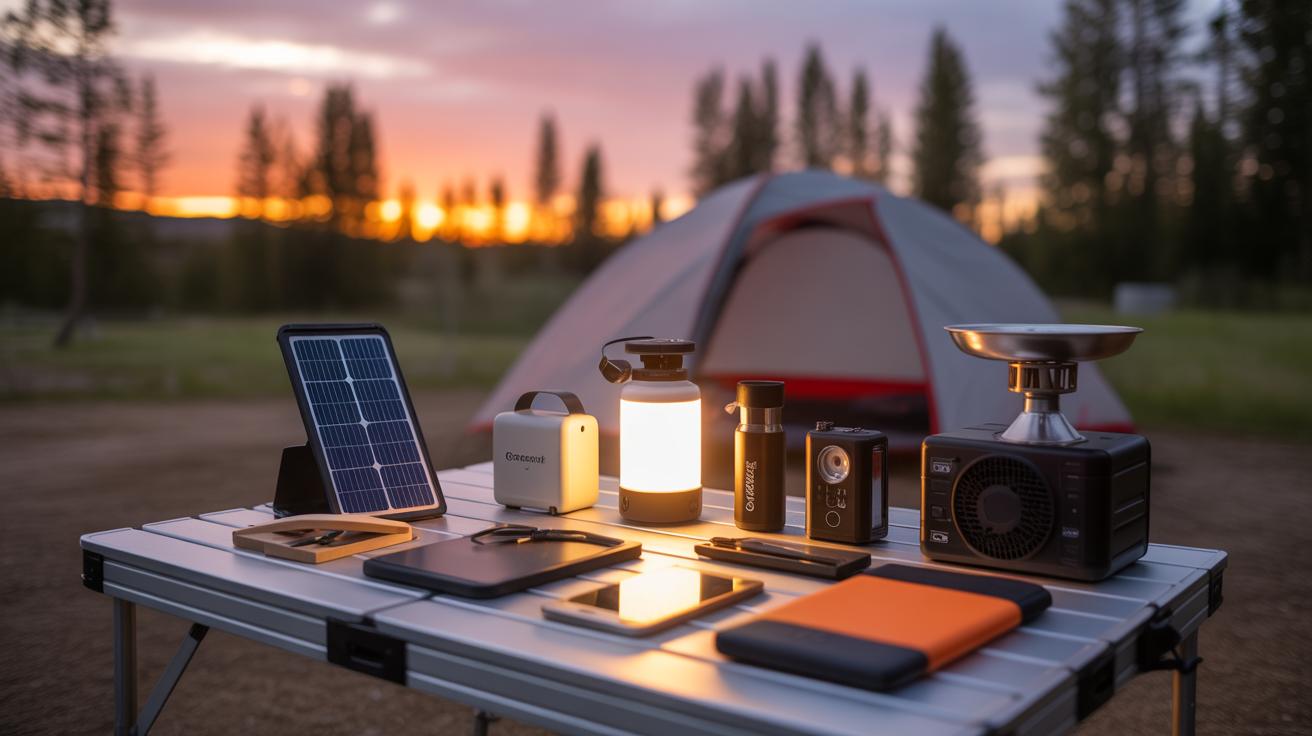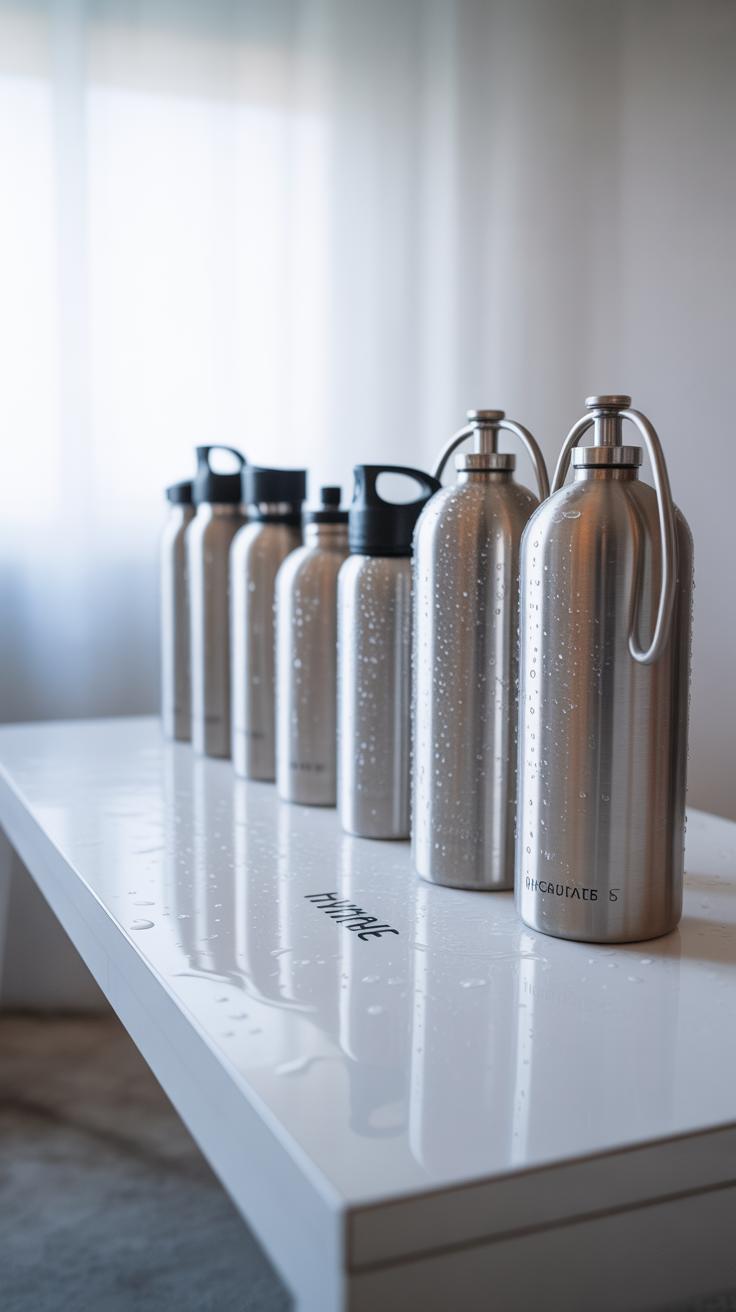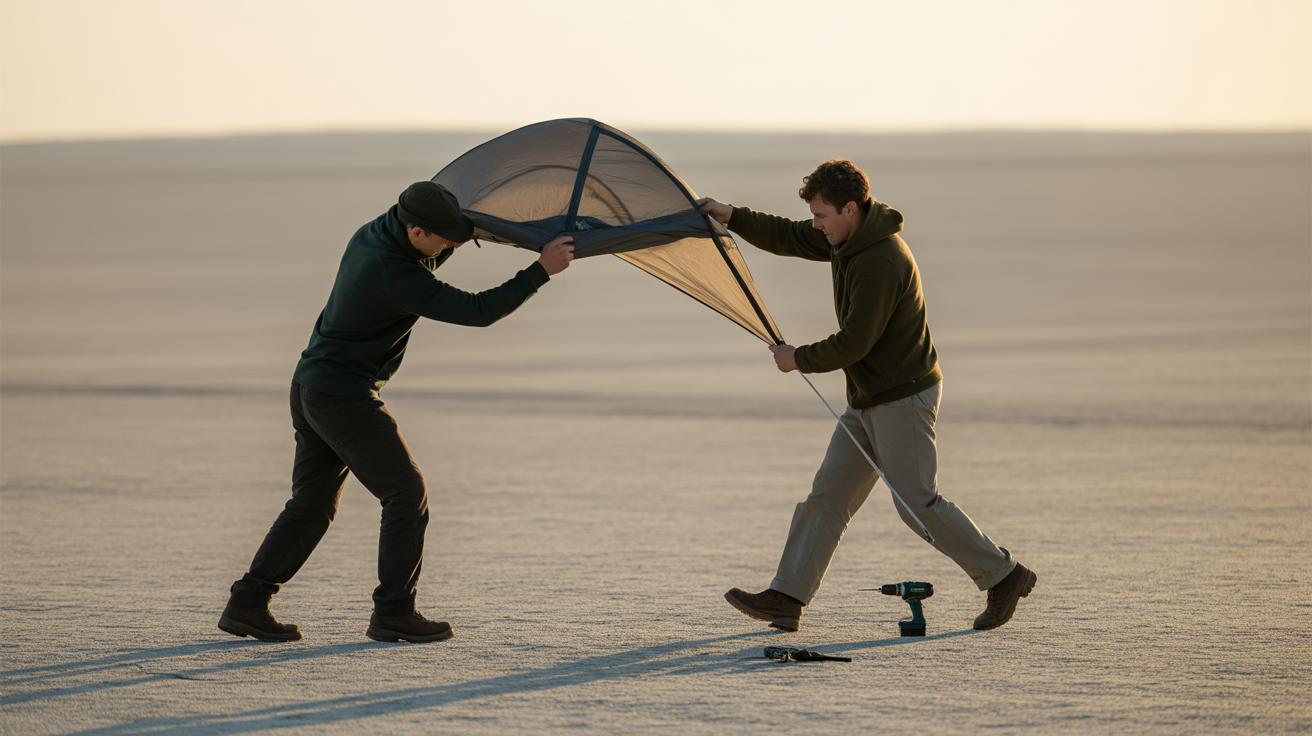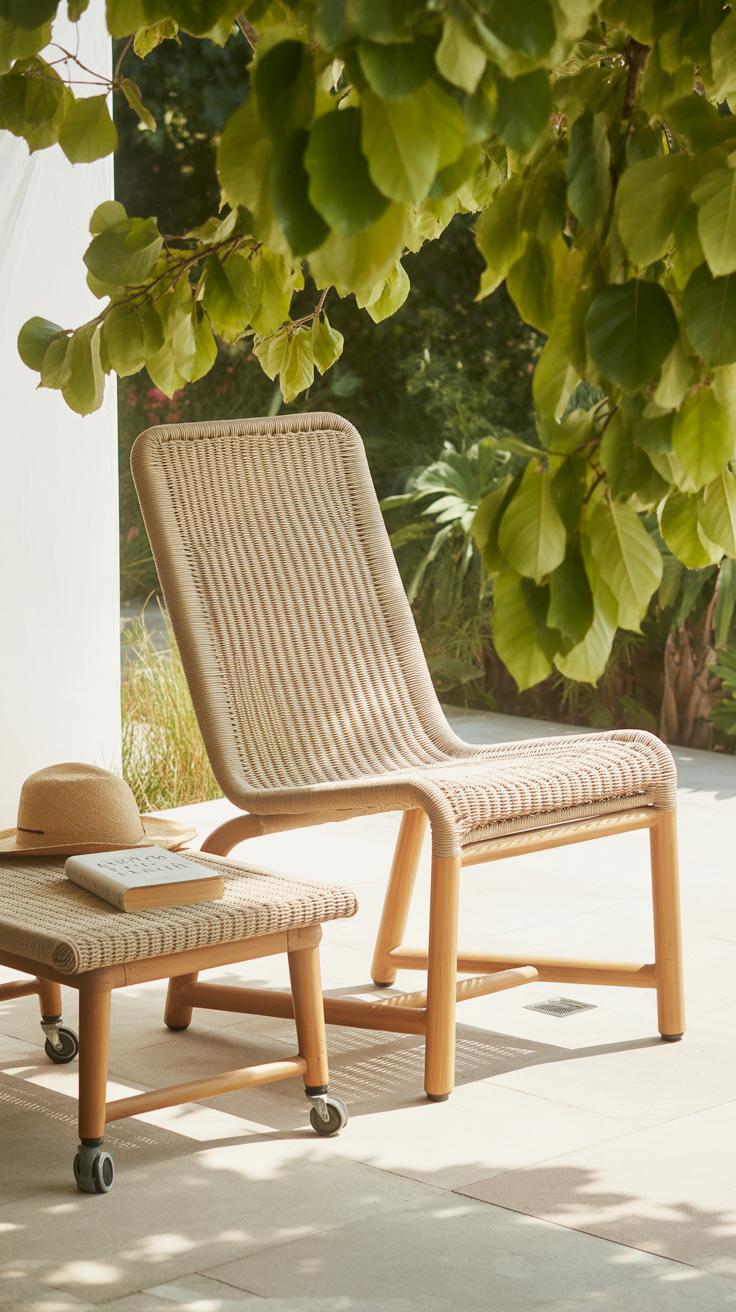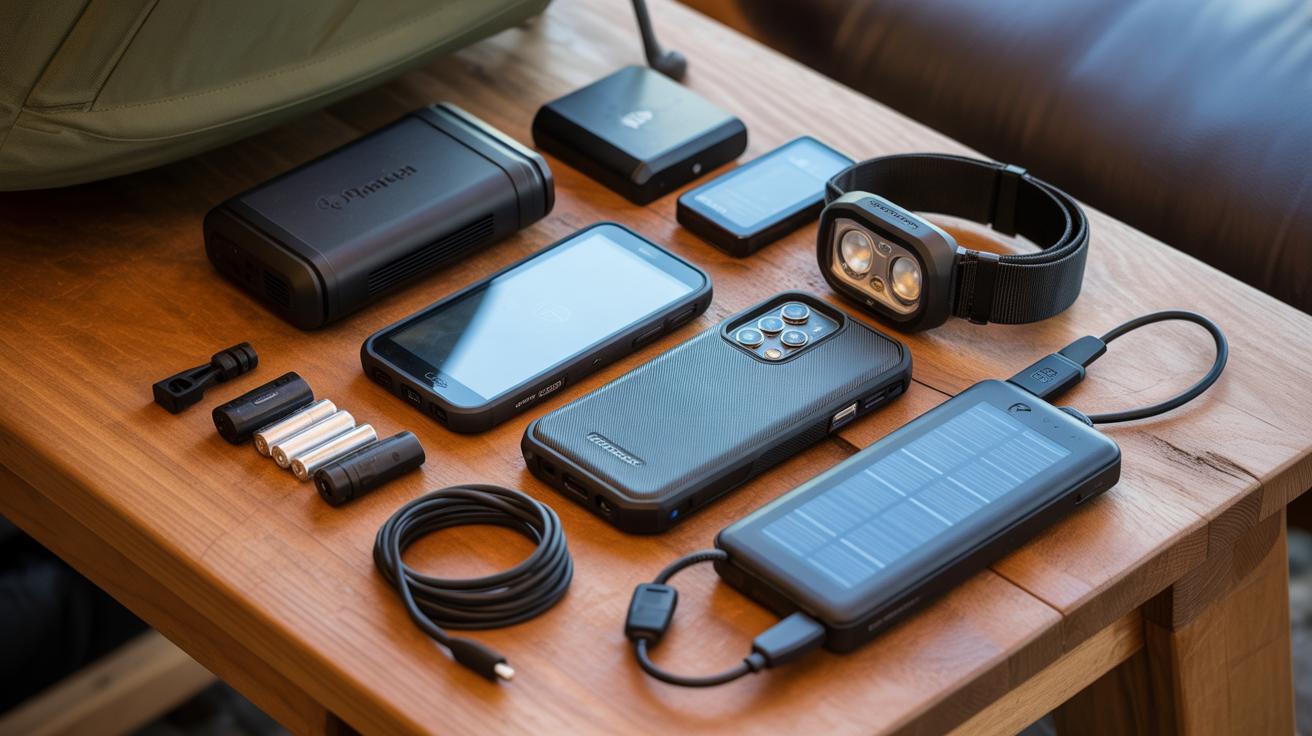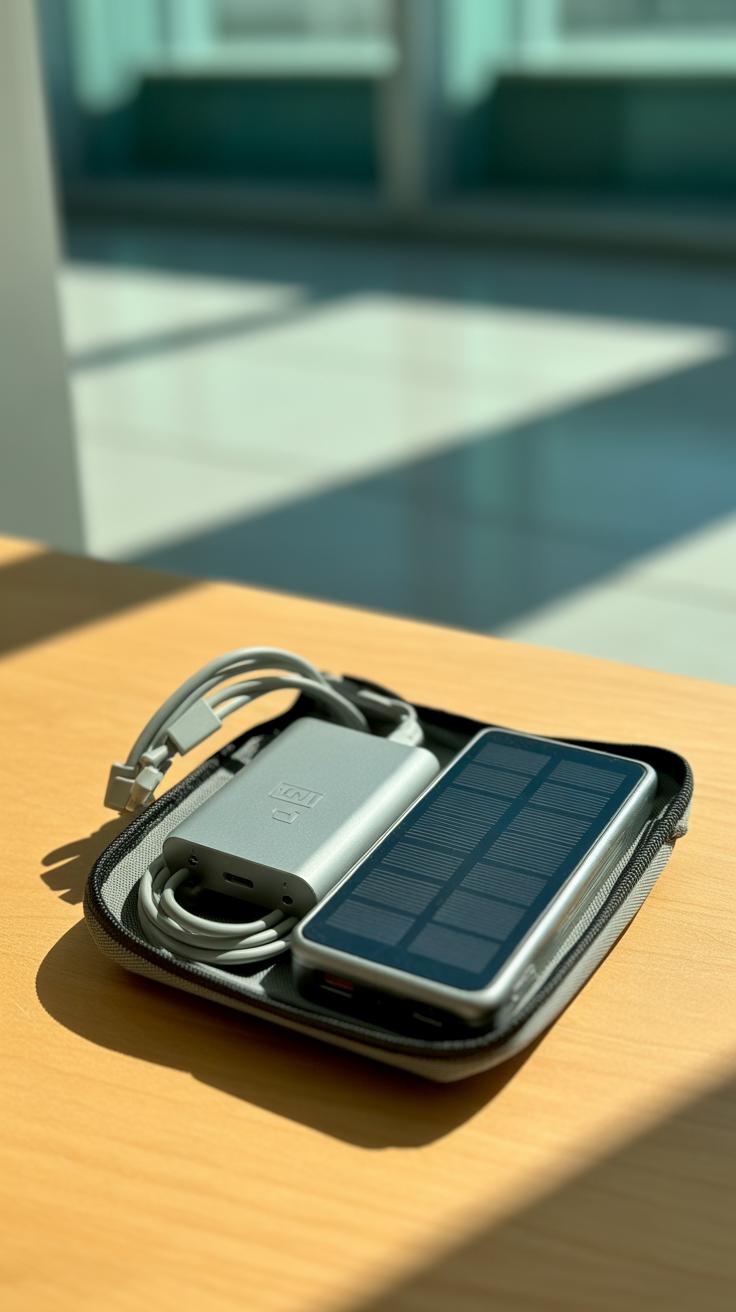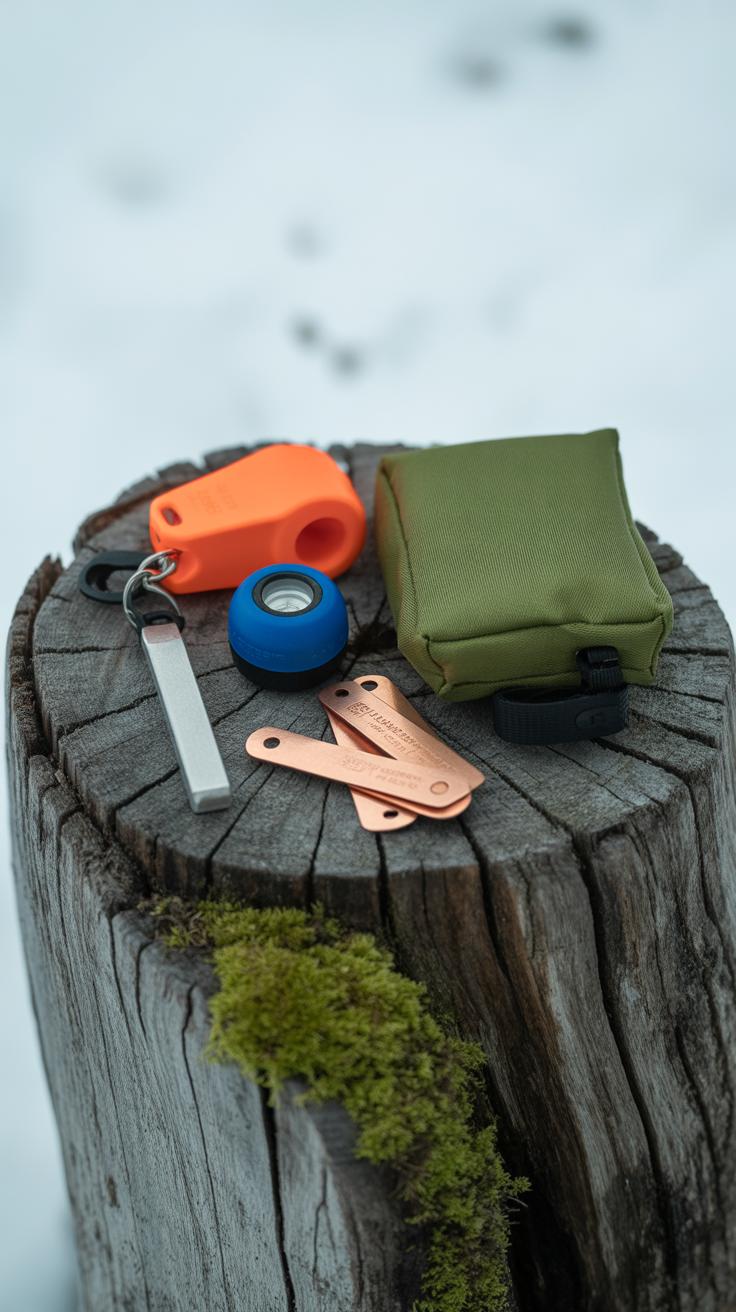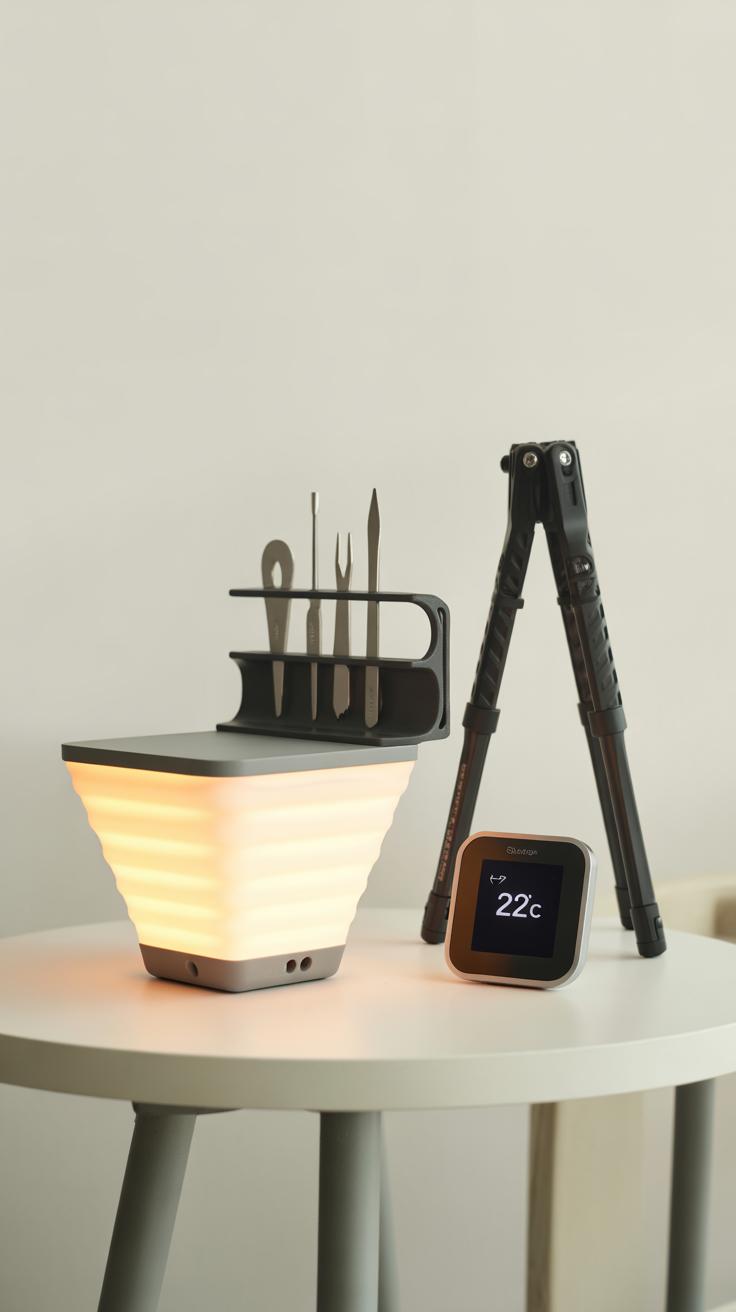Introduction
Camping can be more enjoyable and comfortable with the right gadgets. Imagine setting up a base camp with tools that make cooking, lighting, and organizing easier. Using popular and trending camping gadgets lets you relax more and worry less about the tough parts of camping.
This article explores various camping ideas focused on gadgets that improve comfort in your base camp. You will learn about gadgets that help you cook, stay warm, and keep your space neat. These ideas will make your outdoor adventure smoother and more pleasant.
Choosing Basic Camping Gadgets
Simple Tools That Make a Big Difference
When you think about camping gear, the basics often get overlooked, yet these simple gadgets can shape your entire experience. Pocket knives stand out—not just for cutting rope, but they come in handy in countless small ways you might not expect, like opening a can or whittling a stick for marshmallows. Foldable chairs might seem like a luxury, but once you’ve sat on the ground for hours, you realize how much they improve your comfort. And water bottles, especially insulated ones, aren’t just for hydration—they can keep your drinks cold or warm, which becomes surprisingly important on chilly mornings or hot afternoons.
These basic tools are compact, easy to pack, and usually don’t add much weight but bring a lot to your base camp’s comfort. You might not notice them when everything goes smoothly, but they’ll be the first thing you reach for when you need help or a break. Think of them as the small comforts that keep your trip running without hassle.
How to Pick the Right Basic Gadgets
Choosing your basic gadgets isn’t always straightforward. The type of camping matters—backpacking demands ultra-light gear while car camping can afford heavier, bulkier items. Weather plays a big part, too. For instance, compact LED lights might be fine for a warm, dry climate, but waterproof or wind-resistant gear is smarter if rain’s likely. Size and weight usually top the list, yet usability shouldn’t be sacrificed. A tool that’s lightweight but awkward to use won’t save you time or effort.
Think about your own habits, and maybe your patience threshold. If you get frustrated fumbling with tiny gadgets, bigger and simpler might be better. Maybe you prefer multi-tools with many features, or maybe you like keeping things straightforward with one-tool-one-function. Either way, testing gear before you commit can reveal unexpected frustrations or surprisingly nice features.
Using Portable Cooking Gadgets
Buddy Burners and Portable Stoves Explained
A buddy burner is a simple, often homemade heat source made from a can filled with wax and cardboard or similar material. You light the top, and it burns steadily, giving off enough heat for small pots. It’s low-tech but reliable if you want to boil water or warm a meal without carrying heavy gear.
Portable stoves come in many types—canister, liquid fuel, even wood-burning. These stoves offer more control and stronger flames than buddy burners, which means you can cook a wider range of meals. Think frying, simmering, or even making coffee.
When to choose one over the other? Buddy burners suit quick, simple tasks or backup heating. Portable stoves handle most camp cooking but need attention—keep fuel away from tents, never leave them unattended.
Cooking tips? Always check the wind; a portable stove shield or a low spot in the terrain can help. For buddy burners, watch the flame size—you don’t want your pot to scorch or fuel to run out unexpectedly.
Cooking Comfort with Lightweight Cookware
Weight matters in camping cookware. Carrying heavy pots can make you dread meal prep by day two. Lightweight cookware sets made from titanium or hard-anodized aluminum balance durability and weight. They heat evenly and clean up fast, which you’ll appreciate after a long hike.
Look for nesting sets that stack inside each other—a real space saver. Some have non-stick coatings, but they can wear out; sometimes, simpler is better.
Compact designs with foldable handles and multi-use lids cut down how much you carry and simplify cooking. After all, the less fuss, the quicker you eat and relax.
Ever noticed how cleaning a greasy pot feels like a chore on the trail? Smaller, easier-to-clean pans mean less time washing, more time enjoying your surroundings—or maybe just napping.
Lighting Gadgets for Base Camp
Lighting is one of those essentials that can really change your camping experience—sometimes in subtle ways. LED lanterns are a solid choice for general illumination around your base camp. When picking one, look closely at its brightness, which is usually measured in lumens. Too dim might leave you fumbling in the dark, while too bright could drain batteries too fast. Battery life matters a lot here—nothing worse than a lantern that dies right when you need it most. Size also plays a role. A bulky lantern can be an awkward addition to your pack, but a tiny one might not light enough space.
Solar-powered lights offer a neat solution if you don’t want to deal with replacing batteries all the time. They soak up sunlight during the day and glow quietly at night—great if you’re camping where electricity or spare batteries aren’t an option. The catch is, on cloudy days or in dense forests, the charge might be less reliable. Still, having a bank of solar lights hanging around camp can brighten up your surroundings without adding weight.
Headlamps stand out for hands-free convenience. I’ve lost count of the times a headlamp saved me—whether unpacking gear after dark or taking a late-night walk to the restroom. The adjustable beam and multiple brightness levels let you control where and how much light you want. Plus, your hands stay free, which can’t be overstated when you’re juggling tasks or cooking late.
Choosing which lighting gadgets to bring depends on your priorities. Are you chasing long runtime? Easy portability? Or is hands-free lighting a must? Sometimes, mixing these options leads to the most comfortable and safe base camp setup.
Stay Warm With Trending Heating Gadgets
Portable Heaters for Cold Nights
Portable heaters have become a popular choice for campers looking to beat the cold without fuss. Most of these gadgets run on compact fuel sources like propane or butane, or on rechargeable batteries. They work by converting energy to heat quickly, creating a cozy spot right inside your tent or base camp. But you’ll want to be cautious—using them properly is key. Well-ventilated spaces reduce the risk of carbon monoxide buildup, so keeping vents open or using specially designed heater tents matters.
One good example is a small propane heater that shuts off automatically if tipped over. It’s reassuring, especially after a long day when you’re half asleep. Another option is electric heaters powered by portable power stations—these are quieter and avoid fumes, but they depend entirely on your battery life. What’s tricky is deciding when to use these gadgets. For instance, if you’re in a very cold, damp area, a quick heater blast can help dry out gear overnight, making mornings less miserable.
Using Heat Packs and Warm Gear
Heat packs offer simple but effective warmth, especially in pockets or gloves. You can slip these into your sleeping bag or even shoes. They activate by exposure to air or a gentle squeeze, generating heat for hours. The convenience is hard to beat since they require no batteries or fuel and create direct warmth where it’s needed most.
Pairing heat packs with well-insulated sleeping bags and blankets enhances comfort significantly. I remember once on a chilly trip when the air temperature dipped unexpectedly—my thermal sleeping bag, combined with a few heat packs, made the night surprisingly bearable. These bags often use synthetic insulation or down to trap body heat. A lightweight, warm blanket layered on top keeps drafts away, allowing for deeper, more restful sleep. But remember, the warmth won’t last if your bag isn’t fitted well or if you miss sleeping with dry clothes.
Organizing Your Camp with Smart Storage
Keeping a campsite tidy can sometimes feel like a juggling act—especially when you’re dealing with multiple people, assorted gear, and maybe a few snacks sneaking their way into scattered corners. This is where smart storage gadgets come in. They don’t just save space; they make your base camp feel more manageable, which honestly boosts comfort more than you might expect.
Storage Boxes and Containers
Storage boxes come in all shapes and sizes. Think stackable plastic bins with tight lids—they keep moisture out and protect gear from dirt or critters. Then there are specialized containers like waterproof cases for electronics or compact boxes for smaller items like utensils and first aid supplies. I’ve found that clear containers are useful because you can spot what you need quickly without digging through everything. It might feel like extra weight sometimes, but the time saved hunting for things? Worth it.
When packing, try grouping similar gear together—cooking items in one box, sleeping gear in another. This stops your tent from turning into a cluttered mess, though I admit, it doesn’t always stay perfect after a few days. Still, even a loose system beats chaos.
Hanging Shelves and Organizers
Hanging organizers are surprisingly effective. When floor space is limited, these shelves hook onto tent poles or tree branches and create vertical storage. This keeps frequently used things like headlamps, sunscreen, or snacks within easy reach. One neat trick is to designate specific pockets or shelves for different campers—helps keep things from getting mixed up.
They also help keep dirt off your gear, which again makes the camp feel cleaner. Though, I will say, some organizers can sag if overloaded, so be mindful of how much weight you hang. Would you believe, sometimes just having a simple setup with a few hanging pockets replaces an entire cluttered table?
Gadgets for Clean Water and Hydration
When camping, clean water isn’t just about quenching thirst—it affects your health and overall experience. Drinking untreated water can lead to just about every kind of stomach trouble imaginable, so having the right tools is more than a luxury. Portable water filters have changed the game. They often work by forcing water through fine membranes or carbon layers to remove bacteria and protozoa. You might carry a small pump filter or even a straw-style purifier, which lets you drink straight from streams or lakes. It feels almost like cheating—safe water wherever you go—but it’s really about staying well and avoiding the hassle of filtering out sickness later.
Then, there’s the question of how you carry that clean water. Collapsible bottles are great because they save space when empty. They fold flat, and that means you don’t need to dedicate an entire section of your pack to bulky bottles. It always surprises me how much room this saves, especially on longer hikes. Hydration packs take it a step further—you get hands-free sipping, often without stopping. The real convenience shows on those steep trails where stopping to unscrew a cap feels like a chore. These packs hold enough water to keep you going longer and let you stay focused on the path rather than fiddling with bottles.
Think about it: are you willing to risk your comfort or health over not having a dependable water system? A good filter plus smart containers make a base camp feel less stressful. You spend less time worrying about where the next sip comes from and more time enjoying the outdoors.
Camping Furniture to Relax In
When it comes to making your base camp comfortable, the right furniture gadgets can make a surprising difference. Foldable chairs and portable tables have come a long way from the clunky, heavy sets you might remember from years ago. Look for those that strike a balance between lightweight and sturdy—aluminum frames often do the trick. Some chairs now come with built-in cup holders or small side pockets, which I’ve found handy when you want to keep your phone or a snack close by without cluttering the table.
Ease of transport is key here. If you dread lugging around bulky gear, seek furniture that folds compactly and fits into convenient carry bags. You’ll want designs that can be set up in seconds but still support you well enough to relax after a long day.
Then there are camping cots and mattresses, which often get overlooked but certainly shouldn’t. Sleeping on the ground might sound adventurous, but after one night, you might change your mind. A good cot lifts you off uneven terrain, and combined with a cushioned sleeping pad, it improves sleep quality quite a bit. I once tried a basic cot without much padding—it was okay but left me craving something softer. Investing in a thicker, inflatable mattress or even a memory foam alternative can tip the scale from “just surviving” to genuinely resting outdoors.
So, what’s more important for you: extra portable table space or a cozy sleeping setup? Maybe both? It’s worth thinking about because comfort can really shift how you experience camping—not just at night but all day long.
Power Solutions for Charging Devices
Keeping your devices charged at camp can be a challenge, but the right power gadgets make all the difference. Power banks, solar chargers, and portable generators each offer distinct ways to keep your phones, lights, and other gear ready to use. You might wonder which one fits your style best, depending on how long you stay and what gadgets you bring along.
Choosing Portable Power Banks
Power banks are probably the most straightforward option. Look for these features:
- Capacity: Measured in milliamp-hours (mAh). Bigger capacity means more charges. If you’re just topping off your phone, a 10,000 mAh model might suffice. But for longer trips or more devices, something around 20,000 mAh or more can be a lifesaver.
- Portability: Sometimes bigger means heavier. You want a balance—something easy to stash but powerful enough to meet your needs.
- Output ports: Multiple ports let you charge several gadgets simultaneously. That’s handy when camping with others or powering up multiple devices like phones and headlamps.
From my experience, a solid power bank can easily get you through a weekend, but if you’re relying on heavier gear, it may fall short.
Solar Chargers and Portable Generators
Solar chargers capture sunlight to create power. They’re quiet, eco-friendly, and great if you’re camping in sunny spots. The catch? You need decent sunlight for them to work well—cloudy days slow things down. It’s perfect for casual use or topping off your gadgets during the day.
On the other hand, portable generators deliver more power but come with trade-offs. They’re bulkier and louder—an aspect that might bother the quiet you want at camp. Yet, if you have multiple devices or even small appliances to power, a generator gives you more flexibility. Sometimes, it feels like the generator fights the whole peaceful vibe, but it can be a real backup when solar isn’t enough.
In the end, combining these power solutions might be the smart move. A power bank and a solar charger together cover different situations well. And if you’re willing to carry the extra weight and sound, a generator adds an entirely new level of power to your camp.
Safety Gadgets to Keep You Secure
When you’re deep in the woods or nestled on a remote trail, safety isn’t just a nice-to-have—it’s practically a necessity. That’s where some basic, yet reliable gadgets come in. A first aid kit, personal alarm, and GPS device aren’t just gadgets; they’re peace of mind.
Essential First Aid Kit Contents
If you’re packing a first aid kit for camping, focus on must-haves that cover a range of common mishaps. Think bandages of all sizes—you might not expect a blister, but it’ll surprise you.
- Adhesive bandages: for cuts and scrapes
- Antiseptic wipes or solution: to clean wounds and prevent infection
- Sterile gauze pads and adhesive tape: for larger wounds
- Elastic bandage: useful for sprains or strains
- Antihistamines: in case of allergic reactions
- Pain relievers: just in case someone’s headache or sore muscle kicks in
- Tweezers: because random splinters do happen
- Scissors: handy for cutting tape or clothing
This kit is your go-to for typical emergencies. You don’t have to be a medic, but knowing some basics helps—trust me, I once treated a nasty cut on a friend and having those items made all the difference.
Using Personal Alarms and GPS
Personal alarms might seem a bit obvious, but I think they sometimes get overlooked in packing. A loud alarm draws attention fast if you feel unsafe or get separated from the group. You don’t want to count on shouting alone when distance or darkness interferes.
Then there’s GPS devices. They are more than just fancy compasses. When phone signals vanish, a GPS device can save your bacon by letting you know exactly where you are. Some models offer SOS functions, sending your location to emergency contacts. That feature? It changed my view on carrying one; it’s not about paranoia, really, but about being prepared—for when things don’t go as planned.
Between the first aid kit, personal alarms, and GPS, you’re not just gearing up for fun. You’re gearing up for safety. It may feel a little extra, but when you’re out there, these tools really do help keep your camping trip comfortable in the broadest sense of the word.
Innovative Camping Gadgets to Explore
Solar Showers and Electric Coolers
Solar showers are surprisingly straightforward but quite handy. You fill a black bag with water, leave it in the sun to warm up, and then hang it, usually from a tree or a stand. The warmth depends on sunlight, so clearer days are better — but sometimes you get pleasantly surprised even on a partly cloudy afternoon. It’s a simple step up from cold water rinses, especially after a dusty hike.
Electric coolers have changed how food and drinks stay fresh. Unlike traditional coolers with ice, these plug into your car or a power bank. They maintain a consistent temperature, which means less worry about soggy sandwiches or warm sodas. While they need electricity, many models now run quietly and efficiently, making them practical for base camps that have some power source. You really start appreciating this when you can grab cold water anytime without melting ice packs.
Portable Espresso Makers and Other Luxuries
For those who can’t give up their morning coffee, portable espresso makers fit right in a backpack. Many are manual, using hand pumps or lever action to build pressure and extract espresso on the spot. It’s a bit of ritual but in a good way — a little effort can make your camp mornings feel a bit more grounded. Some come with built-in water heaters, so you don’t need a separate kettle.
Other gadgets that add comfort include compact, rechargeable fans for stuffy tents, inflatable camping pillows that pack small, or even LED lanterns with multiple brightness settings. Maybe a bit indulgent, yes, but they shape your camp into a more inviting space, especially after long, rough days. You might wonder if all this is overkill — but really, who wouldn’t want a little comfort while sleeping under the stars?
Conclusions
Using trending gadgets in your base camp can change your camping experience. They help you cook better meals, stay warm, and keep your gear organized. When you have the right tools, camping becomes easier and more fun.
Think about what matters most to you in camp comfort. Choose gadgets that match your needs. With smart planning and the right gear, your next camping trip can be comfortable and exciting.

